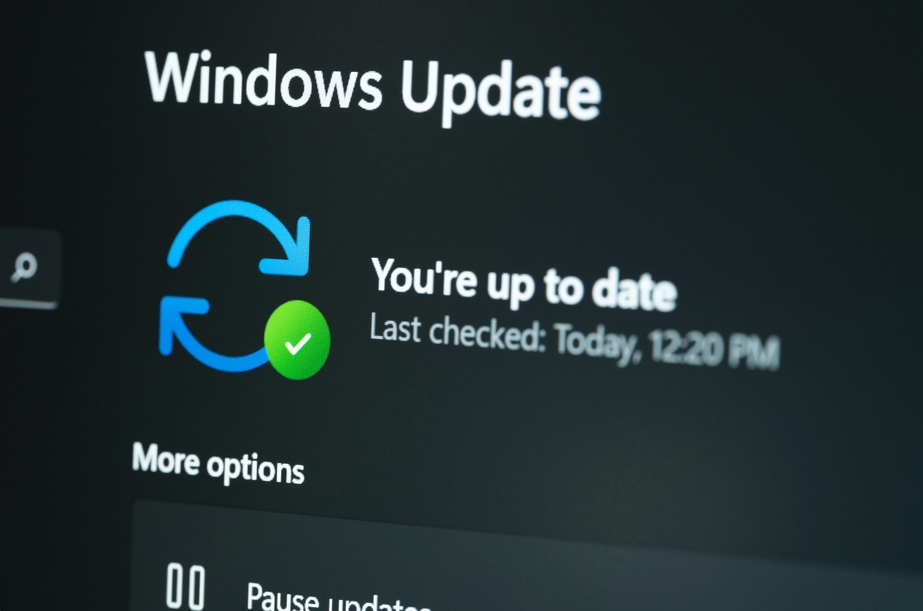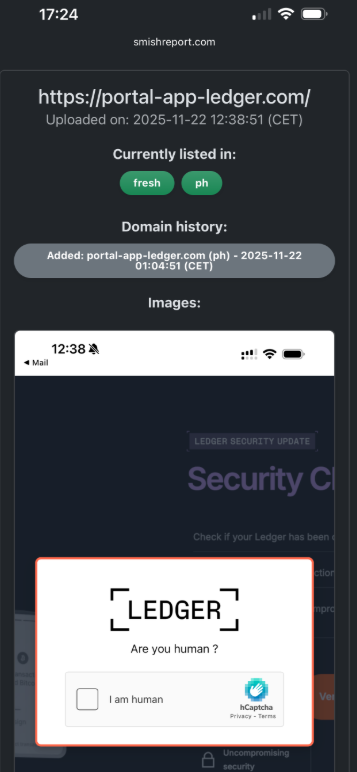Microsoft today pushed updates to fix at least 56 security flaws in its Windows operating systems and supported software. This final Patch Tuesday of 2025 tackles one zero-day bug that is already being exploited, as well as two publicly disclosed vulnerabilities.

Despite releasing a lower-than-normal number of security updates these past few months, Microsoft patched a whopping 1,129 vulnerabilities in 2025, an 11.9% increase from 2024. According to Satnam Narang at Tenable, this year marks the second consecutive year that Microsoft patched over one thousand vulnerabilities, and the third time it has done so since its inception.
The zero-day flaw patched today is CVE-2025-62221, a privilege escalation vulnerability affecting Windows 10 and later editions. The weakness resides in a component called the “Windows Cloud Files Mini Filter Driver” — a system driver that enables cloud applications to access file system functionalities.
“This is particularly concerning, as the mini filter is integral to services like OneDrive, Google Drive, and iCloud, and remains a core Windows component, even if none of those apps were installed,” said Adam Barnett, lead software engineer at Rapid7.
Only three of the flaws patched today earned Microsoft’s most-dire “critical” rating: Both CVE-2025-62554 and CVE-2025-62557 involve Microsoft Office, and both can exploited merely by viewing a booby-trapped email message in the Preview Pane. Another critical bug — CVE-2025-62562 — involves Microsoft Outlook, although Redmond says the Preview Pane is not an attack vector with this one.
But according to Microsoft, the vulnerabilities most likely to be exploited from this month’s patch batch are other (non-critical) privilege escalation bugs, including:
–CVE-2025-62458 — Win32k
–CVE-2025-62470 — Windows Common Log File System Driver
–CVE-2025-62472 — Windows Remote Access Connection Manager
–CVE-2025-59516 — Windows Storage VSP Driver
–CVE-2025-59517 — Windows Storage VSP Driver
Kev Breen, senior director of threat research at Immersive, said privilege escalation flaws are observed in almost every incident involving host compromises.
“We don’t know why Microsoft has marked these specifically as more likely, but the majority of these components have historically been exploited in the wild or have enough technical detail on previous CVEs that it would be easier for threat actors to weaponize these,” Breen said. “Either way, while not actively being exploited, these should be patched sooner rather than later.”
One of the more interesting vulnerabilities patched this month is CVE-2025-64671, a remote code execution flaw in the Github Copilot Plugin for Jetbrains AI-based coding assistant that is used by Microsoft and GitHub. Breen said this flaw would allow attackers to execute arbitrary code by tricking the large language model (LLM) into running commands that bypass the guardrails and add malicious instructions in the user’s “auto-approve” settings.
CVE-2025-64671 is part of a broader, more systemic security crisis that security researcher Ari Marzuk has branded IDEsaster (IDE stands for “integrated development environment”), which encompasses more than 30 separate vulnerabilities reported in nearly a dozen market-leading AI coding platforms, including Cursor, Windsurf, Gemini CLI, and Claude Code.
The other publicly-disclosed vulnerability patched today is CVE-2025-54100, a remote code execution bug in Windows Powershell on Windows Server 2008 and later that allows an unauthenticated attacker to run code in the security context of the user.
For anyone seeking a more granular breakdown of the security updates Microsoft pushed today, check out the roundup at the SANS Internet Storm Center. As always, please leave a note in the comments if you experience problems applying any of this month’s Windows patches.
If you work on firmware RE, unknown protocols, C2 RE, or undocumented file formats, give it a read.
I start by defining a custom binary file format, then show how Kaitai Struct comes into play
I know SaaS app detection and response is not in everyone's remit although I've worked in a few orgs where we've had to threat model SaaS apps, understand their telemetry and devise attack paths that could lead to unfavourable outcomes. We spent a lot of time doing this research. I thought about it and myself if I could get ( don't hate for me it ) agents to perform this research. So I started with this mental objective:
"How can I greedily transpose a SaaS app and find attack surface by transposing it onto MITRE attack and emulating adversarial techniques making some assumptions about an environment"
It turns out, I think, that the early results are really promising. Full transparency I am trying to build this into a product, but I've released a public version of some of the analysis in the attached link. You can view Slack and see 2 views:
My next steps are to integrate audit log context to identify detection opportunities and configuration context to identify mitigation options. If you’ve had to do this with your own teams, I’d really value hearing your perspective. Always open to chatting as this is my life now
This particular course, SANS 588, has assembled 6 sections all on areas of pentesting I am most interested in learning, on account of all my prior work in the past as a DevSecOps engineer.
These subjects are what I want to study, but the hefty price tag of approx 9000 dollars is pretty crazy, and I don't have a company to pay for it. Are there any other worthwhile and reputable providers of this kind of education or certification?

Internet security refers to tactics that protect your online activities from a variety of cyberthreats such as malware, phishing attacks, scams, and even unauthorized access by hackers. In this article, we will highlight the importance of internet security in safeguarding your digital network and outline what you can do to have a comprehensive online security system in place.
Internet usage has become central to our daily life. In 2024 alone, DataReportal reported that around 5.56 billion—that’s 67.9%—of the world’s population were connected to the internet. This was 136 million more than the year before, resulting in the creation of approximately 402.7 million terabytes of data each day. With this wealth of information, it is no wonder that cybercriminals are scrambling to make billions of dollars off the internet.
Globally, the average cost of data breaches rose by 10% between 2023 and 2024, totaling an estimated $4.88 million. This staggering amount included not only the loss in business revenues but also recovery costs and regulatory fines. For this reason, it has become important to implement internet security to protect our online personal data, activities, and devices from cyberthreats and unauthorized access.
While internet security is sometimes confused with, it’s important to point out their subtle distinctions. Internet security focuses on protecting your activities and data as they travel across the web, while cybersecurity is focused on protecting digital assets such as systems, networks, and data from cyberthreats. These two concepts work together to create your complete digital protection environment.
Internet security threats come in a variety of forms, complexities, and detectability. Some of the common threats we face today include:
While internet security threats may seem overwhelming at first glance, solutions are available to safeguard your computer or mobile devices. Below is a detailed look at some security measures.
Your home network serves as the foundation of your digital life, connecting all your devices and enabling your online activities. Having a strong network security foundation with multiple layers of protection will keep your connections and data safe from cyber threats.
Your router serves as the gateway between your home devices and the internet, making it a critical security component. Start by changing your router’s default administrator username and password immediately after setup. These factory defaults are widely known and easily exploited by attackers. Choose a strong, unique password that combines letters, numbers, and symbols to prevent unauthorized access to your router’s settings.
Enable WPA3 encryption on your wireless network, as it provides the strongest protection for your Wi-Fi connections. If your router doesn’t support WPA3, use WPA2 as a minimum standard. These protocols scramble your data as it travels between devices and your router, making it unreadable to anyone attempting to intercept your communications.
Create a unique network name or service set identifier (SSID) that doesn’t reveal your router manufacturer or model number, and pair it with a complex Wi-Fi password at least 12 characters long with a mix of uppercase and lowercase letters, numbers, and special characters. Avoid using personal information such as your address or name in either your network name or password, as this information can help attackers guess your password.
Regularly update your router’s firmware to patch security vulnerabilities and improve performance. Check your router manufacturer’s website quarterly for updates if automatic updates aren’t available, as outdated firmware often contains known security flaws that cybercriminals actively exploit.
Separate the guest network for visitors and smart home devices to protect your primary network where you store sensitive data. If a guest’s device is compromised or if a smart device has security vulnerabilities, the threat can’t easily spread to your main computers and phones. Configure your guest network with a strong password and consider time limits for access.
Enable access point isolation, also called client isolation, on your wireless network to prevent potentially compromised devices from attacking other devices on the same network. If you are an advanced user, consider creating separate virtual networks (VLANs) for different device types, such as keeping work computers on a different network segment than entertainment devices.
Modern routers include built-in firewalls that monitor suspicious activity in incoming and outgoing network traffic, and block potentially harmful connections and unnecessary ports and services.
Antivirus programs are engineered to prevent, detect, and remove viruses and other types of malicious software. Antivirus software can run automatic scans on specific files or directories to make sure no malicious activity is present, and no network or data breach has occurred.
McAfee’s antivirus software comes with key security capabilities such as malware detection, quarantine, and removal, as well as options for scanning files and applications, and an advanced firewall for home network security.
Multi-factor authentication is an authentication method that requires at least two pieces of evidence before granting access to a website. Using this method adds another layer of security to your applications and reduces the likelihood of a data breach.
Web browsers vary widely in terms of the security features, with some offering just the basics and others providing a more complete range of features. Ideally, you should opt for a browser that offers the following security features:
When properly implemented, these steps help ensure that your internet connection remains private, your data stays secure, and unauthorized users can’t access your network resources. Regular maintenance of these security settings, combined with staying informed about emerging threats, gives you the foundation for safe and confident internet use.
These days, smartphones and tablets hold more personal information than ever before—from banking details and photos to work emails and location data. While this convenience makes life easier, it also creates new opportunities for cybercriminals to target your mobile devices. As you secure your network and desktop or laptop devices, so should you treat your mobile devices with the same care. Here are some straightforward security practices that you can implement to significantly reduce your exposure to mobile threats:
Here are answers to the most common questions about protecting yourself online.
What does internet security cover?
Internet security protects you from a wide range of online threats including viruses, malware, phishing attacks, identity theft, and data breaches. It also covers your devices, personal information, online accounts, and network connections to help you browse, shop, and communicate safely online.
How is internet security different from antivirus software?
While antivirus software focuses specifically on detecting and removing malicious programs, internet security provides comprehensive protection that includes antivirus plus additional features such as firewalls, web protection, email security, identity monitoring, and safe browsing tools.
Do Macs and smartphones need internet security protection?
Yes, all devices that connect to the internet can be targeted by cybercriminals. Mobile devices and Macs face increasing security threats including malicious apps, phishing attempts, and network attacks, making protection essential regardless of your device type.
How can I stay safe on public Wi-Fi?
Avoid accessing sensitive accounts or making purchases on public Wi-Fi networks. When you must use public Wi-Fi, stick to encrypted websites with the “https” in the URL, avoid automatic connections, and consider using a VPN for added protection.
How can you keep children safe online?
As children grow older, their internet use becomes more extensive. To keep them safe online, educate them about the risks of web browsing and about best practices to avoid online threats like not sharing passwords. Explain which information should be shared and which should be kept private. Instruct them to never click on links from unknown sources. Set up parental controls on certain websites to filter inappropriate content and keep a child-friendly interface.
What are the signs that my account has been compromised?
Watch for unexpected password reset emails, unfamiliar login notifications, unusual account activity, friends receiving spam from your accounts, or unauthorized charges on your financial statements. If you notice any of these signs, change your passwords immediately and contact the relevant service providers.
How often should I update my software and devices?
Enable automatic updates whenever possible and install security patches as soon as they become available. Regular updates fix security vulnerabilities that criminals actively exploit, so staying current is one of your best defenses against cyber threats.
As more cyberthreats emerge and expand both in scope and sophistication, it’s essential that you protect your internet activities. Effective protection doesn’t have to be complicated. Taking steps to install antivirus software, create strong and unique passwords, enable your firewall, and use multi-factor authentication will help build a strong defense against online threats.
Start implementing these internet security measures today and enjoy the confidence that comes with knowing you’re protected online.
For added security, consider using an all-in-one antivirus solution like McAfee+ to safeguard your devices from online threats. Let McAfee handle your security while you focus on enjoying the internet.
The post What Is Internet Security? appeared first on McAfee Blog.
I’ve been playing with the “Careless Whisper” side-channel idea and hacked together a small PoC that shows how you can track a phone’s device activity state (screen on/off, offline) via WhatsApp – without any notifications or visible messages on the victim’s side.
How it works (very roughly):
- uses WhatsApp via an unofficial API
- sends tiny “probe” reactions to special/invalid message IDs
- WhatsApp still sends back silent delivery receipts
- I just measure the round-trip time (RTT) of those receipts
From that, you start seeing patterns like:
- low RTT ≈ screen on / active, usually on Wi-Fi
- a bit higher RTT ≈ screen on / active, on mobile data
- high RTT ≈ screen off / standby on Wi-Fi
- very high RTT ≈ screen off / standby on mobile data / bad reception
- timeouts / repeated failures ≈ offline (airplane mode, no network, etc.)
*depends on device
The target never sees any message, notification or reaction. The same class of leak exists for Signal as well (per the original paper).
In theory you’d still see this in raw network traffic (weird, regular probe pattern), and on the victim side it will slowly burn through a bit more mobile data and battery than “normal” idle usage.
Over time you can use this to infer behavior:
- when someone is probably at home (stable Wi-Fi RTT)
- when they’re likely sleeping (long standby/offline stretches)
- when they’re out and moving around (mobile data RTT patterns)
So in theory you can slowly build a profile of when a person is home, asleep, or out — and this kind of tracking could already be happening without people realizing it.
Quick “hotfix” for normal users:
Go into the privacy settings of WhatsApp and Signal and turn off / restrict that unknown numbers can message you (e.g. WhatsApp: Settings → Privacy → Advanced). The attack basically requires that someone can send stuff to your number at all – limiting that already kills a big chunk of the risk.
My open-source implementation (research / educational use only): https://github.com/gommzystudio/device-activity-tracker
Original Paper:
https://arxiv.org/abs/2411.11194

For this week in scams, we have fake AI-generated shopping images that could spoil your holidays, scammers use an Apple Support ticket in a takeover attempt, and a PlayStation scam partly powered by AI.
Let’s start with those fake ads, because holiday shopping is in full swing.
Turns out that three-quarters of people (74%) can’t correctly identify a fake AI-generated social media ad featuring popular holiday gifts—which could leave them open to online shopping scams.
That finding, and several others, comes by way of research from Santander, a financial services company in the UK.
Here’s a quick rundown of what else they found:
From the study … could you tell these ads are both fake?


In all, cheap and readily available AI tools make spinning up fake ads quick and easy work. The same goes for launching websites where those “goods” can get sold. In the past, we’ve seen scammers take two different approaches when they use social media ads and websites to lure in their victims:
During the holidays, scammers pump out ads that offer seemingly outstanding deals on hot items. Of course, the offer and the site where it’s “sold” is fake. Victims hand over their personal info and credit card number, never to see the items they thought they’d purchased. On top of the money a victim loses, the scammer also has their card info and can run up its tab or sell it to others on the dark web.
In this case, the scammer indeed sells and delivers something. But you don’t get what you paid for. The item looks, feels, fits, or works entirely differently than what was advertised. In this way, people wind up with a cheaply made item cobbled together with inferior materials. Worse yet, these scams potentially prop up sweatshops, child labor, and other illegal operations in the process. Nothing about these sites and the things they sell on them are genuine.
So, fake AI shopping ads are out there. What should you look out for? Here’s a quick list:
“I almost lost everything—my photos, my email, my entire digital life.”
So opens a recent Medium post from Eric Moret recounting how he almost handed over his Apple Account to a scammer armed with a real Apple Support ticket to make this elaborate phishing attack look legit.
Over the course of nearly 30 minutes, a scammer calmly and professionally walked Moret through a phony account takeover attempt.
It started with two-factor authentication notifications that claimed someone was trying to access his iCloud account. Three minutes later, he got a call from an Atlanta-based number. The caller said they were with Apple Support. “Your account is under attack. We’re opening a ticket to help you. Someone will contact you shortly.”
Seconds later came another call from the same number, which is where the scam fully kicked in. The person also said they were from Apple Support and that they’d opened a case on Moret’s behalf. Sure enough, when directed, Moret opened his email and saw a legitimate case number from a legitimate Apple address.
The caller then told him to reset his password, which he did. Moret received a text with a link to a site where he could, apparently, close his case.
Note that at no time did the scammers ask him for his two-factor authentication code throughout this process, which is always the sign of a scam. However, the scammers had another way to get it.
The link took him to a site called “appeal-apple dot com,” which was in fact a scam site. However, the page looked official to him, and he entered a six-digit code “confirmation code” sent by text to finish the process.
That “confirmation code” was actually a fresh two-factor authentication code. With that finally in hand, the scammers signed in. Moret received a notice that a new device had logged into his account. Moret quickly reset his password again, which kicked them out and stopped the attack.
Maybe you didn’t get a scam call from “Emma” or “Carl” at Wal-Mart, but plenty of people did. Around eight million in all. Now the Federal Communications Commission’s (FCC) Enforcement Bureau wants to put a stop to them.
“Emma” and “Carl” are in fact a couple of AI voices fronting a scam framed around the bogus purchase of a PlayStation. It’s garnered its share of complaints, so much that the FCC has stepped in. It alleges that SK Teleco, a voice service provider, provisioned at least some of these calls, and that it must immediately stop.
According to the FCC, the call plays out like this:
“A preauthorized purchase of PlayStation 5 special edition with Pulse 3D headset is being ordered from your Walmart account for an amount of 919 dollars 45 cents. To cancel your order or to connect with one of our customer support representatives, please press ‘1.’ Thank you.”
Pressing “1” connects you to a live operator who asks for personal identifiable such as Social Security numbers to cancel the “purchase.”
If you were wondering, it’s unlawful to place calls to cellphones containing artificial or prerecorded voice messages absent an emergency purpose or prior express consent. According to the FCC’s press release, SK Teleco didn’t respond to a request to investigate the calls. The FCC further alleges that it’s unlikely the company has any such consent.
Per the FCC, “If SK Teleco fails to take swift action to prevent scam calls, the FCC will require all other providers to no longer accept call traffic from SK Teleco.”
We’ll see how this plays out, yet it’s a good reminder to report scam calls. When it comes to any kind of scam, law enforcement and federal agencies act on complaints.
Here’s a quick list of a few stories that caught our eye this week:
Scammers pose as law enforcement, threaten jail time if you don’t pay (with audio)
Deepfake of North Carolina lawmaker used in award-winning Brazilian Whirlpool video
What happens when you kick millions of teens off social media? Australia’s about to find out
We’ll see you next Friday with more updates, scam news, and ways you can stay safer out there.
The post This Week in Scams: Phony AI Ads, Apple Account Takeover Attempts, and a PlayStation Scam appeared first on McAfee Blog.
A sprawling academic cheating network turbocharged by Google Ads that has generated nearly $25 million in revenue has curious ties to a Kremlin-connected oligarch whose Russian university builds drones for Russia’s war against Ukraine.

The Nerdify homepage.
The link between essay mills and Russian attack drones might seem improbable, but understanding it begins with a simple question: How does a human-intensive academic cheating service stay relevant in an era when students can simply ask AI to write their term papers? The answer – recasting the business as an AI company – is just the latest chapter in a story of many rebrands that link the operation to Russia’s largest private university.
Search in Google for any terms related to academic cheating services — e.g., “help with exam online” or “term paper online” — and you’re likely to encounter websites with the words “nerd” or “geek” in them, such as thenerdify[.]com and geekly-hub[.]com. With a simple request sent via text message, you can hire their tutors to help with any assignment.
These nerdy and geeky-branded websites frequently cite their “honor code,” which emphasizes they do not condone academic cheating, will not write your term papers for you, and will only offer support and advice for customers. But according to This Isn’t Fine, a Substack blog about contract cheating and essay mills, the Nerdify brand of websites will happily ignore that mantra.
“We tested the quick SMS for a price quote,” wrote This Isn’t Fine author Joseph Thibault. “The honor code references and platitudes apparently stop at the website. Within three minutes, we confirmed that a full three-page, plagiarism- and AI-free MLA formatted Argumentative essay could be ours for the low price of $141.”

A screenshot from Joseph Thibault’s Substack post shows him purchasing a 3-page paper with the Nerdify service.
Google prohibits ads that “enable dishonest behavior.” Yet, a sprawling global essay and homework cheating network run under the Nerdy brands has quietly bought its way to the top of Google searches – booking revenues of almost $25 million through a maze of companies in Cyprus, Malta and Hong Kong, while pitching “tutoring” that delivers finished work that students can turn in.
When one Nerdy-related Google Ads account got shut down, the group behind the company would form a new entity with a front-person (typically a young Ukrainian woman), start a new ads account along with a new website and domain name (usually with “nerdy” in the brand), and resume running Google ads for the same set of keywords.
UK companies belonging to the group that have been shut down by Google Ads since Jan 2025 include:
–Proglobal Solutions LTD (advertised nerdifyit[.]com);
–AW Tech Limited (advertised thenerdify[.]com);
–Geekly Solutions Ltd (advertised geekly-hub[.]com).
Currently active Google Ads accounts for the Nerdify brands include:
-OK Marketing LTD (advertising geekly-hub[.]net), formed in the name of Olha Karpenko, a young Ukrainian woman;
–Two Sigma Solutions LTD (advertising litero[.]ai), formed in the name of Olekszij (Alexey) Pokatilo.

Google’s Ads Transparency page for current Nerdify advertiser OK Marketing LTD.
Mr. Pokatilo has been in the essay-writing business since at least 2009, operating a paper-mill enterprise called Livingston Research alongside Alexander Korsukov, who is listed as an owner. According to a lengthy account from a former employee, Livingston Research mainly farmed its writing tasks out to low-cost workers from Kenya, Philippines, Pakistan, Russia and Ukraine.
Pokatilo moved from Ukraine to the United Kingdom in Sept. 2015 and co-founded a company called Awesome Technologies, which pitched itself as a way for people to outsource tasks by sending a text message to the service’s assistants.
The other co-founder of Awesome Technologies is 36-year-old Filip Perkon, a Swedish man living in London who touts himself as a serial entrepreneur and investor. Years before starting Awesome together, Perkon and Pokatilo co-founded a student group called Russian Business Week while the two were classmates at the London School of Economics. According to the Bulgarian investigative journalist Christo Grozev, Perkon’s birth certificate was issued by the Soviet Embassy in Sweden.

Alexey Pokatilo (left) and Filip Perkon at a Facebook event for startups in San Francisco in mid-2015.
Around the time Perkon and Pokatilo launched Awesome Technologies, Perkon was building a social media propaganda tool called the Russian Diplomatic Online Club, which Perkon said would “turbo-charge” Russian messaging online. The club’s newsletter urged subscribers to install in their Twitter accounts a third-party app called Tweetsquad that would retweet Kremlin messaging on the social media platform.
Perkon was praised by the Russian Embassy in London for his efforts: During the contentious Brexit vote that ultimately led to the United Kingdom leaving the European Union, the Russian embassy in London used this spam tweeting tool to auto-retweet the Russian ambassador’s posts from supporters’ accounts.
Neither Mr. Perkon nor Mr. Pokatilo replied to requests for comment.
A review of corporations tied to Mr. Perkon as indexed by the business research service North Data finds he holds or held director positions in several U.K. subsidiaries of Synergy, Russia’s largest private education provider. Synergy has more than 35,000 students, and sells T-shirts with patriotic slogans such as “Crimea is Ours,” and “The Russian Empire — Reloaded.”
The president of Synergy is Vadim Lobov, a Kremlin insider whose headquarters on the outskirts of Moscow reportedly features a wall-sized portrait of Russian President Vladimir Putin in the pop-art style of Andy Warhol. For a number of years, Lobov and Perkon co-produced a cross-cultural event in the U.K. called Russian Film Week.

Synergy President Vadim Lobov and Filip Perkon, speaking at a press conference for Russian Film Week, a cross-cultural event in the U.K. co-produced by both men.
Mr. Lobov was one of 11 individuals reportedly hand-picked by the convicted Russian spy Marina Butina to attend the 2017 National Prayer Breakfast held in Washington D.C. just two weeks after President Trump’s first inauguration.
While Synergy University promotes itself as Russia’s largest private educational institution, hundreds of international students tell a different story. Online reviews from students paint a picture of unkept promises: Prospective students from Nigeria, Kenya, Ghana, and other nations paying thousands in advance fees for promised study visas to Russia, only to have their applications denied with no refunds offered.
“My experience with Synergy University has been nothing short of heartbreaking,” reads one such account. “When I first discovered the school, their representative was extremely responsive and eager to assist. He communicated frequently and made me believe I was in safe hands. However, after paying my hard-earned tuition fees, my visa was denied. It’s been over 9 months since that denial, and despite their promises, I have received no refund whatsoever. My messages are now ignored, and the same representative who once replied instantly no longer responds at all. Synergy University, how can an institution in Europe feel comfortable exploiting the hopes of Africans who trust you with their life savings? This is not just unethical — it’s predatory.”
This pattern repeats across reviews by multilingual students from Pakistan, Nepal, India, and various African nations — all describing the same scheme: Attractive online marketing, promises of easy visa approval, upfront payment requirements, and then silence after visa denials.
Reddit discussions in r/Moscow and r/AskARussian are filled with warnings. “It’s a scam, a diploma mill,” writes one user. “They literally sell exams. There was an investigation on Rossiya-1 television showing students paying to pass tests.”
The Nerdify website’s “About Us” page says the company was co-founded by Pokatilo and an American named Brian Mellor. The latter identity seems to have been fabricated, or at least there is no evidence that a person with this name ever worked at Nerdify.
Rather, it appears that the SMS assistance company co-founded by Messrs. Pokatilo and Perkon (Awesome Technologies) fizzled out shortly after its creation, and that Nerdify soon adopted the process of accepting assignment requests via text message and routing them to freelance writers.
A closer look at an early “About Us” page for Nerdify in The Wayback Machine suggests that Mr. Perkon was the real co-founder of the company: The photo at the top of the page shows four people wearing Nerdify T-shirts seated around a table on a rooftop deck in San Francisco, and the man facing the camera is Perkon.

Filip Perkon, top right, is pictured wearing a Nerdify T-shirt in an archived copy of the company’s About Us page. Image: archive.org.
Where are they now? Pokatilo is currently running a startup called Litero.Ai, which appears to be an AI-based essay writing service. In July 2025, Mr. Pokatilo received pre-seed funding of $800,000 for Litero from an investment program backed by the venture capital firms AltaIR Capital, Yellow Rocks, Smart Partnership Capital, and I2BF Global Ventures.
Meanwhile, Filip Perkon is busy setting up toy rubber duck stores in Miami and in at least three locations in the United Kingdom. These “Duck World” shops market themselves as “the world’s largest duck store.”
This past week, Mr. Lobov was in India with Putin’s entourage on a charm tour with India’s Prime Minister Narendra Modi. Although Synergy is billed as an educational institution, a review of the company’s sprawling corporate footprint (via DNS) shows it also is assisting the Russian government in its war against Ukraine.

Synergy University President Vadim Lobov (right) pictured this week in India next to Natalia Popova, a Russian TV presenter known for her close ties to Putin’s family, particularly Putin’s daughter, who works with Popova at the education and culture-focused Innopraktika Foundation.
The website bpla.synergy[.]bot, for instance, says the company is involved in developing combat drones to aid Russian forces and to evade international sanctions on the supply and re-export of high-tech products.

A screenshot from the website of synergy,bot shows the company is actively engaged in building armed drones for the war in Ukraine.
KrebsOnSecurity would like to thank the anonymous researcher NatInfoSec for their assistance in this investigation.
Update, Dec. 8, 10:06 a.m. ET: Mr. Pokatilo responded to requests for comment after the publication of this story. Pokatilo said he has no relation to Synergy nor to Mr. Lobov, and that his work with Mr. Perkon ended with the dissolution of Awesome Technologies.
“I have had no involvement in any of his projects and business activities mentioned in the article and he has no involvement in Litero.ai,” Pokatilo said of Perkon.
Mr. Pokatilo said his new company Litero “does not provide contract cheating services and is built specifically to improve transparency and academic integrity in the age of universal use of AI by students.”
“I am Ukrainian,” he said in an email. “My close friends, colleagues, and some family members continue to live in Ukraine under the ongoing invasion. Any suggestion that I or my company may be connected in any way to Russia’s war efforts is deeply offensive on a personal level and harmful to the reputation of Litero.ai, a company where many team members are Ukrainian.”
I've been experimenting with a CDP-based technique for tracing the origin of JavaScript values inside modern, framework-heavy SPAs.
The method, called Breakpoint-Driven Heap Search (BDHS), performs step-out-based debugger pauses, captures a heap snapshot at each pause, and searches each snapshot for a target value (object, string, primitive, nested structure, or similarity signature).
It identifies the user-land function where the value first appears, avoiding framework and vendor noise via heuristics.
Alongside BDHS, I also implemented a Live Object Search that inspects the live heap (not just snapshots), matches objects by regex or structure, and allows runtime patching of matched objects.
This is useful for analyzing bot-detection logic, state machines, tainted values, or any internal object that never surfaces in the global scope.
Potential use cases: SPA reverse engineering, DOM XSS investigations, taint analysis, anti-bot logic tracing, debugging minified/obfuscated flows, and correlating network payloads with memory structures.
Hi, during my work as a pentester, we have developed internal tooling for different types of tests. We thought it would be helpful to release a web version of our SSRF payload generator which has come in handy many times.
It is particularly useful for testing PDF generators when HTML tags may be inserted in the final document. We're aiming for a similar feel to PortSwigger's XSS cheat sheet. The generator includes various payload types for different SSRF scenarios with multiple encoding options.
It works by combining different features like schemes (dict:, dns:, file:, gopher:, etc...) with templates (<img src="{u}">, <meta http-equiv="refresh" content="0;url={u}">, etc...), and more stuff like local files, static hosts. The result is a large amount of payloads to test.
Enter your target URL for callbacks, "Generate Payloads" then copy everything to the clipboard and paste into Burp. Note that there are a number of predefined hosts as well like 127.0.0.1.
No tracking or ads on the site, everything is client-side.
Best Regards!
Edit: holy s**t the embed image is large
AI/LLM Red Team Handbook and Field Manual
I've published a handbook for penetration testing AI systems and LLMs: https://cph-sec.gitbook.io/ai-llm-red-team-handbook-and-field-manual
Contents:
Target audience: pentesters, red teamers, and security researchers assessing AI-integrated applications, chatbots, and LLM implementations.
Open to feedback and contributions from the community.
Often, beginners and even experienced phishers confuse the approach they are using when phishing, often resulting in failing campaigns and bad results. I did a little writeup to describe each approach.
China-based phishing groups blamed for non-stop scam SMS messages about a supposed wayward package or unpaid toll fee are promoting a new offering, just in time for the holiday shopping season: Phishing kits for mass-creating fake but convincing e-commerce websites that convert customer payment card data into mobile wallets from Apple and Google. Experts say these same phishing groups also are now using SMS lures that promise unclaimed tax refunds and mobile rewards points.
Over the past week, thousands of domain names were registered for scam websites that purport to offer T-Mobile customers the opportunity to claim a large number of rewards points. The phishing domains are being promoted by scam messages sent via Apple’s iMessage service or the functionally equivalent RCS messaging service built into Google phones.

An instant message spoofing T-Mobile says the recipient is eligible to claim thousands of rewards points.
The website scanning service urlscan.io shows thousands of these phishing domains have been deployed in just the past few days alone. The phishing websites will only load if the recipient visits with a mobile device, and they ask for the visitor’s name, address, phone number and payment card data to claim the points.

A phishing website registered this week that spoofs T-Mobile.
If card data is submitted, the site will then prompt the user to share a one-time code sent via SMS by their financial institution. In reality, the bank is sending the code because the fraudsters have just attempted to enroll the victim’s phished card details in a mobile wallet from Apple or Google. If the victim also provides that one-time code, the phishers can then link the victim’s card to a mobile device that they physically control.
Pivoting off these T-Mobile phishing domains in urlscan.io reveals a similar scam targeting AT&T customers:

An SMS phishing or “smishing” website targeting AT&T users.
Ford Merrill works in security research at SecAlliance, a CSIS Security Group company. Merrill said multiple China-based cybercriminal groups that sell phishing-as-a-service platforms have been using the mobile points lure for some time, but the scam has only recently been pointed at consumers in the United States.
“These points redemption schemes have not been very popular in the U.S., but have been in other geographies like EU and Asia for a while now,” Merrill said.
A review of other domains flagged by urlscan.io as tied to this Chinese SMS phishing syndicate shows they are also spoofing U.S. state tax authorities, telling recipients they have an unclaimed tax refund. Again, the goal is to phish the user’s payment card information and one-time code.

A text message that spoofs the District of Columbia’s Office of Tax and Revenue.
Many SMS phishing or “smishing” domains are quickly flagged by browser makers as malicious. But Merrill said one burgeoning area of growth for these phishing kits — fake e-commerce shops — can be far harder to spot because they do not call attention to themselves by spamming the entire world.
Merrill said the same Chinese phishing kits used to blast out package redelivery message scams are equipped with modules that make it simple to quickly deploy a fleet of fake but convincing e-commerce storefronts. Those phony stores are typically advertised on Google and Facebook, and consumers usually end up at them by searching online for deals on specific products.

A machine-translated screenshot of an ad from a China-based phishing group promoting their fake e-commerce shop templates.
With these fake e-commerce stores, the customer is supplying their payment card and personal information as part of the normal check-out process, which is then punctuated by a request for a one-time code sent by your financial institution. The fake shopping site claims the code is required by the user’s bank to verify the transaction, but it is sent to the user because the scammers immediately attempt to enroll the supplied card data in a mobile wallet.
According to Merrill, it is only during the check-out process that these fake shops will fetch the malicious code that gives them away as fraudulent, which tends to make it difficult to locate these stores simply by mass-scanning the web. Also, most customers who pay for products through these sites don’t realize they’ve been snookered until weeks later when the purchased item fails to arrive.
“The fake e-commerce sites are tough because a lot of them can fly under the radar,” Merrill said. “They can go months without being shut down, they’re hard to discover, and they generally don’t get flagged by safe browsing tools.”
Happily, reporting these SMS phishing lures and websites is one of the fastest ways to get them properly identified and shut down. Raymond Dijkxhoorn is the CEO and a founding member of SURBL, a widely-used blocklist that flags domains and IP addresses known to be used in unsolicited messages, phishing and malware distribution. SURBL has created a website called smishreport.com that asks users to forward a screenshot of any smishing message(s) received.
“If [a domain is] unlisted, we can find and add the new pattern and kill the rest” of the matching domains, Dijkxhoorn said. “Just make a screenshot and upload. The tool does the rest.”

The SMS phishing reporting site smishreport.com.
Merrill said the last few weeks of the calendar year typically see a big uptick in smishing — particularly package redelivery schemes that spoof the U.S. Postal Service or commercial shipping companies.
“Every holiday season there is an explosion in smishing activity,” he said. “Everyone is in a bigger hurry, frantically shopping online, paying less attention than they should, and they’re just in a better mindset to get phished.”
As we can see, adopting a shopping strategy of simply buying from the online merchant with the lowest advertised prices can be a bit like playing Russian Roulette with your wallet. Even people who shop mainly at big-name online stores can get scammed if they’re not wary of too-good-to-be-true offers (think third-party sellers on these platforms).
If you don’t know much about the online merchant that has the item you wish to buy, take a few minutes to investigate its reputation. If you’re buying from an online store that is brand new, the risk that you will get scammed increases significantly. How do you know the lifespan of a site selling that must-have gadget at the lowest price? One easy way to get a quick idea is to run a basic WHOIS search on the site’s domain name. The more recent the site’s “created” date, the more likely it is a phantom store.
If you receive a message warning about a problem with an order or shipment, visit the e-commerce or shipping site directly, and avoid clicking on links or attachments — particularly missives that warn of some dire consequences unless you act quickly. Phishers and malware purveyors typically seize upon some kind of emergency to create a false alarm that often causes recipients to temporarily let their guard down.
But it’s not just outright scammers who can trip up your holiday shopping: Often times, items that are advertised at steeper discounts than other online stores make up for it by charging way more than normal for shipping and handling.
So be careful what you agree to: Check to make sure you know how long the item will take to be shipped, and that you understand the store’s return policies. Also, keep an eye out for hidden surcharges, and be wary of blithely clicking “ok” during the checkout process.
Most importantly, keep a close eye on your monthly statements. If I were a fraudster, I’d most definitely wait until the holidays to cram through a bunch of unauthorized charges on stolen cards, so that the bogus purchases would get buried amid a flurry of other legitimate transactions. That’s why it’s key to closely review your credit card bill and to quickly dispute any charges you didn’t authorize.

Unfortunately in today’s world, scammers are coming at us from all angles to trick us to get us to part with our hard-earned money. We all need to be vigilant in protecting ourselves online. If you aren’t paying attention, even if you know what to look for, they can get you. There are numerous ways to detect fake sites or emails, phishing, and other scams.
Before we delve into the signs of fake websites, we will first take a closer look at the common types of scam that use websites, what happens when you accidentally access a fake website, and what you can do in case you unknowingly purchased items from it.
Fake or scam websites are fraudulent sites that look legitimate while secretly attempting to steal your personal information, money, or account access.
These deceptive platforms masquerade as trustworthy businesses or organizations, sending urgent messages such as popular shopping websites offering fantastic limited-time deals, banking websites requesting immediate account verification, government portals claiming you owe taxes or are eligible for refunds, and shipping companies asking for delivery fees.
The urgency aims to trick you into logging in and sharing sensitive details—credit card numbers, Social Security information, login credentials, and personal data. Once you submit your data, the scammers will steal your identity, drain your accounts, or sell your details to other criminals on the dark web.
These scam websites have become increasingly prevalent because they’re relatively inexpensive to create and can reach millions of potential victims quickly through email and text campaigns, social media ads, and search engine manipulation.
Cybersecurity researchers and consumer protection agencies discover these fraudulent sites through various methods, including monitoring suspicious domain registrations, analyzing reported phishing attempts, and tracking unusual web traffic patterns. According to the FBI’s Internet Crime Complaint Center, losses from cyber-enabled fraud amounted to $13.7 billion, with fake websites representing a significant portion of these losses.
Visiting a fake website, accidentally or intentionally, can expose you to several serious security risks that can impact your digital life and financial well-being:
Scammers use different tricks to make fake websites look real, but most of them fall into familiar patterns. Knowing the main types of scam sites helps you recognize danger faster. This section lists the most common categories of scam websites, how they work, and the red flags that give them away before they can steal your information or money.
Understanding these common scam types helps you recognize fake sites before they can steal your information or money. When in doubt, verify legitimacy by visiting official websites directly through bookmarks or search engines rather than clicking suspicious links.
For the latest warnings and protection guidance, check resources from the Federal Trade Commission and the FBI’s Internet Crime Complaint Center.
You can protect yourself by learning to recognize the warning signs of fake sites. By understanding what these scams look like and how they operate, you’ll be better equipped to shop, bank, and browse online with confidence. Remember, legitimate companies will never pressure you to provide sensitive information through unsolicited emails or urgent pop-up messages.
Most scams usually start out from social engineering tactics such as phishing, smishing, and fake social media messages with suspicious links, before leading you to a fake website.
From these communications, the scammers impersonate legitimate organizations before finally executing their malevolent intentions. To avoid being tricked, it is essential to recognize the warning signs wherever you encounter them.
Fake emails are among the most common phishing attempts you’ll encounter. If you see any of these signs in an unsolicited email, it is best not to engage:
Smishing messages bear the same signs as phishing emails and have become increasingly sophisticated. These fake messages often appear to come from delivery services, banks, or government agencies. Common tactics include fake package delivery notifications, urgent banking alerts, or messages claiming you’ve won prizes or need to verify account information.
Legitimate organizations typically don’t include clickable links in unsolicited text messages, especially for account-related actions. When in doubt, don’t click the link—instead, open your banking app directly or visit the official website by typing the URL manually.
Social media platforms give scammers new opportunities to create convincing fake profiles and pages. They might impersonate customer service accounts, create fake giveaways, or send direct messages requesting personal information. These fake sites often use profile pictures and branding that closely resemble legitimate companies.
Unusual sender behavior is another indicator of a scam across all platforms. This includes messages from contacts you haven’t heard from in years, communications from brands you don’t typically interact with, or requests that seem out of character for the supposed sender.
Scammers have become increasingly cunning in creating fake websites that closely mimic legitimate businesses and services. Here are some real-life examples of how cybercriminals use fake websites to victimize consumers:
Scammers exploit your trust in the United States Postal Service (USPS), designing sophisticated fake websites to steal your personal information, payment details, or money. They know you’re expecting a package or need to resolve a delivery issue, making you more likely to enter sensitive information without carefully verifying the site’s authenticity.
USPS-themed smishing attacks arrive as text messages stating your package is delayed, undeliverable, or requires immediate action. Common phrases include “Pay $1.99 to reschedule delivery” or “Your package is held – click here to release.”
Scammers use various URL manipulation techniques to make their fake sites appear official. Watch for these red flags:
Always verify package information and delivery issues through official USPS channels before taking any action on suspicious websites or messages:
Reporting fake USPS websites helps protect others from falling victim to these scams and assists law enforcement in tracking down perpetrators.
Remember that legitimate USPS services are free for standard delivery confirmation and tracking. Any website demanding payment for basic package tracking or delivery should be treated as suspicious and verified through official USPS channels before providing any personal or financial information.
According to the Federal Trade Commission, tech support scams cost Americans nearly $1.5 billion in 2024. These types of social engineering attacks are increasingly becoming sophisticated, making it more important than ever to verify security alerts through official channels.
Sadly, many scammers are misusing the McAfee name to create fake tech support pop-up scams and trick you into believing your computer is infected or your protection has expired and hoping you’ll act without thinking.
These pop-ups typically appear while you’re browsing and claim your computer is severely infected with viruses, malware, or other threats. They use official-looking McAfee logos, colors, and messaging to appear legitimate to get you to call a fake support number, download malicious software, or pay for unnecessary services.
Learning to detect fake sites and pop-ups protects you from scam. Be on the lookout for these warning signs:
If you see a suspicious pop-up claiming to be from McAfee, here’s exactly what you should do:
To check if your McAfee protection is genuinely active and up-to-date:
Remember, legitimate McAfee software updates and notifications come through the installed program itself, not through random browser pop-ups. Your actual McAfee protection works quietly in the background without bombarding you with alarming messages.
Stay protected by trusting your installed McAfee software and always verifying security alerts through official McAfee channels such as your installed McAfee dashboard or the official website.
Be prepared and know how to respond quickly when something doesn’t feel right. If you suspect you’ve encountered a fake website, trust your instincts and take these protective steps immediately.
Recognizing fake sites and emails becomes easier with practice. The key is to trust your instincts—if something feels suspicious or too good to be true, take a moment to verify through official channels. With the simple verification techniques covered in this guide, you can confidently navigate the digital world and spot fake sites and emails before they cause harm.
Your best defense is to make these quick security checks a regular habit—verify URLs, look for secure connections, and trust your instincts when something feels off. Go directly to the source or bookmark your most-used services and always navigate to them. Enable two-factor authentication on important accounts, and remember that legitimate companies will never ask for sensitive information via email. Maintaining healthy skepticism about unsolicited communications will protect not only your personal information but also help create a safer online environment for everyone.
For the latest information on fake websites and scams and to report them, visit the Federal Trade Commission’s scam alerts or the FBI’s Internet Crime Complaint Center.
The post Ways to Tell if a Website Is Fake appeared first on McAfee Blog.
Rolling out a small research utility I have been building. It provides a simple way to look up proof-of-concept exploit links associated with a given CVE. It is not a vulnerability database. It is a discovery surface that points directly to the underlying code. Anyone can test it, inspect it, or fold it into their own workflow.
A small rate limit is in place to stop automated scraping. The limit is visible at:
https://labs.jamessawyer.co.uk/cves/api/whoami
An API layer sits behind it. A CVE query looks like:
curl -i "https://labs.jamessawyer.co.uk/cves/api/cves?q=CVE-2025-0282"
The Web Ui is
Most open-source L7 DDoS mitigation and bot-protection approaches rely on challenges (e.g., CAPTCHA or JavaScript proof-of-work) or static rules based on the User-Agent, Referer, or client geolocation. These techniques are increasingly ineffective, as they are easily bypassed by modern open-source impersonation libraries and paid cloud proxy networks.
We explore a different approach: classifying HTTP client requests in near real time using ClickHouse as the primary analytics backend.
We collect access logs directly from Tempesta FW, a high-performance open-source hybrid of an HTTP reverse proxy and a firewall. Tempesta FW implements zero-copy per-CPU log shipping into ClickHouse, so the dataset growth rate is limited only by ClickHouse bulk ingestion performance - which is very high.
WebShield, a small open-source Python daemon:
periodically executes analytic queries to detect spikes in traffic (requests or bytes per second), response delays, surges in HTTP error codes, and other anomalies;
upon detecting a spike, classifies the clients and validates the current model;
if the model is validated, automatically blocks malicious clients by IP, TLS fingerprints, or HTTP fingerprints.
To simplify and accelerate classification — whether automatic or manual — we introduced a new TLS fingerprinting method.
WebShield is a small and simple daemon, yet it is effective against multi-thousand-IP botnets.
The full article with configuration examples, ClickHouse schemas, and queries.

The holidays are the season of giving; unfortunately, it’s also the season when scammers try to cash in on the spirit of generosity
If you’re seeing a heartfelt charity ad on social media, a touching email, or a surprise text asking you to donate, it’s worth pausing for a moment. Is it genuine charity—or a scam built to tug at your heartstrings?
The good news: staying safe doesn’t mean stopping your generosity. With a few quick checks, you can give confidently and protect yourself.
Charity fraud is when scammers pose as legitimate nonprofits—or misuse the name of a real charity—to trick people into donating money or giving away personal information.
In some cases, the organization is completely fake. In others, it’s a real charity that uses donations in misleading or unethical ways, passing very little money to the actual cause.
The first type involves flat-out fraud, where the organization is a front for a scam, through and through. Any money you give goes straight into the scammer’s pocket. As does your personal and payment info, which can lead to further fraud.
These are real, registered charities. But They keep the majority of donations for overhead instead of helping the cause.
This second type often involves questionable practices by the organization. According to the Better Business Bureau, reputable organizations keep 35% or less of their funds for operations.
Meanwhile, some less-than-reputable organizations keep up to 95% of funds, leaving only 5% for advancing the cause they advocate. (For a closer look at some examples, the independent watchdog group Charity Watch published a blog highlighting some of the worst charities they audited in 2024.)
Common to both, they’ll indeed play on your emotions, and they’ll urge you to donate now. As it is with so many scams and shady deals on the internet, you’ll find a sense of urgency central to their message.
For starters, reputable charities often have dot-org as their domain extension—versus dot-com or any one of the hundreds of permutations available today.
Charities leave a paper trail, one that can get audited. And fake ones won’t leave a trail at all. With a quick look at some reputable online resources, you can quickly find out if the charity you want to support is legit.
In the U.S., the Federal Trade Commission (FTC) has a site full of resources so that you can make your donation truly count. Resources like Charity Watch and Charity Navigator, along with the BBB’s Wise Giving Alliance can also help you identify the best charities. You can also look up a charity’s Form 990 tax return online.
This goes hand-in-hand with the above. If you feel like you’re getting rushed to donate, it could be a sign of a scam. Step back and indeed do your research with a few clicks to the resources listed above.
This protects you in two ways. If you fall victim to a scam, you can contest the charges with your credit card company. And if a scammer tries to use your card again for other purchases, you can contest those too. Also, in the U.S., credit cards offer you additional protection that debit cards don’t. That’s thanks to the Fair Credit Billing Act (FCBA). It limits your liability to $50 for fraudulent charges on a credit card if you report the loss to your issuer within 60 days.
The following is a sure-fire red flag: requests for payment in cash, gift cards, cryptocurrency, or wire transfers. Don’t ever use these forms of payment for charities, let alone anything else online.
Better yet, donate directly. Rather than respond to calls, ads, emails or texts, donate on your terms. After you give your possible donation some time and thought, you can go directly to the website of a charitable organization that you’ve researched.
Get a scam detector. You can combine your healthy skepticism and awareness with the right technology, like our Scam Detector and Web Protection.
Both will alert you if a link you received might take you to a sketchy site. It’ll also block those sites if you accidentally tap or click on a bad link.
Clean up your personal info online. Scams over email, phone, and text all require the same thing: your contact info.
In many cases, scammers get it from data broker sites. Data brokers buy, collect, and sell detailed personal info, which they compile from several public and private sources, such as local, state, and federal records, plus third parties like supermarket shopper’s cards and mobile apps that share and sell user data.
Moreover, they’ll sell it to anyone who pays for it, including people who’ll use that info for scams. You can help reduce those scam texts and calls by removing your info from those sites. Our Personal Data Cleanup scans some of the riskiest data broker sites and shows you which ones are selling your personal info.
Monitor your identity and credit. The problem with many scams is that you only find out about it once the damage is done, like when a scammer uses your phished card number to make additional purchases in your name.
Actively monitoring your identity and credit can spot a problem before it becomes an even bigger one. You can take care of both easily with our credit monitoring and identity monitoring.
Additionally, our identity theft coverage can help if the unexpected happens with up to $2 million in identity theft coverage and identity restoration support if determined you’re a victim of identity theft.
You’ll find these protections, and plenty more, in McAfee+.
If you want to give back and help protect people from online fraud, McAfee has partnered with Fight Cyber Crime, a legitimate U.S. nonprofit dedicated to helping victims of online scams.
You might remember them from our Scam Stories partnership earlier this year, sharing real stories from real scam victims to raise awareness about threats facing us every day on and offline.
Visit their site to learn more or make a donation: https://fightcybercrime.org/about/donate/
Supporting validated charities like Fight Cyber Crime is one way to make a real impact this holiday season—without putting yourself at risk.
The post How to Spot Charity Scams and Donate Safely this Giving Season appeared first on McAfee Blog.

When it comes to online safety, independent testing matters. And in the latest AV-Comparatives Real-World Protection Test, McAfee earned the highest possible rating, ADVANCED+, with a 99.5% protection rate. It’s the kind of recognition that helps shoppers understand which tools truly hold up in real-life conditions, not just in controlled lab environments.
For anyone navigating today’s mix of emails, downloads, suspicious links, and AI-driven scams, independent results like these are a clear signal: strong protection still makes a real difference.
The Real-World Protection Test is an independent evaluation run by AV-Comparatives, a trusted third-party security testing lab. The test measures how well antivirus and online protection tools block real threats that people encounter every day, including dangerous URLs, malicious downloads, phishing pages, and harmful files attempting to run on a device.
This type of testing is widely cited by major tech publications and review sites because it reflects actual user behavior rather than controlled lab simulations.
According to AV-Comparatives, their Real-World Protection Test is designed to measure how security products perform in situations people face every day: clicking a link, opening a file, visiting a site for the first time.
It’s one of the most widely cited sources in tech journalism and consumer product reviews, and it often shapes how online shoppers evaluate cybersecurity tools.
Here’s why tests like these are used in tech reviews, buying guides, and search engine rankings:
McAfee has earned an ADVANCED+ rating in all tests since June 2022, demonstrating our consistency and reliability in the moments that matter most: when a threat appears disguised as something routine.
The latest evaluation included 19 consumer security products, each tested across the full attack chain, from the moment a malicious URL is accessed to the instant a dangerous file tries to execute.
Unlike benchmark tests that focus on one part of the process, this assessment mirrors real user behavior. AV-Comparatives notes that the methodology is meant to be “as realistic as possible,” and the results often reveal meaningful differences in both protection and false positives.
With this round of testing, McAfee maintains its cycle of highest ratings in every Real-World Protection Test, while several well-known competitors were downgraded due to high false-positive counts.
A high protection score matters most when you’re simply going about your day — shopping, banking, downloading a file, or clicking a link you think is safe. Independent recognition signals three core things:
Strong results indicate that advanced threats, misleading links, and malicious downloads are blocked before they can cause harm.
With only four false positives out of nearly 500 samples, McAfee flagged less than 1% of clean files incorrectly. For context: the industry average in this test was 10 false positives, and one competitor even misidentified 75, meaning it labeled nearly 16% of harmless activity as a threat.
The takeaway is simple: strong protection shouldn’t get in your way, and these results show it doesn’t.
Criminals now use AI to make fake emails, websites, and support messages look real. Testing that mirrors those real-world conditions helps consumers see which tools stay ahead of that curve.
McAfee’s threat protection, the same technology validated in this test, is built into McAfee+ Premium, McAfee+ Advanced, McAfee+ Ultimate, McAfee Total Protection, and McAfee LiveSafe.
McAfee’s built-in Scam Detector, included in all core plans, automatically detects scams across text, email, and video, blocks dangerous links, and identifies deepfakes—stopping harm before it happens.
The post McAfee Named ADVANCED+ in Real-World Protection — What That Means for You appeared first on McAfee Blog.
Hey everyone, listen I'm going to use AI to explain all this just a heads up but the deal is I patented a thesis and I was testing it out on Google's bug bounty program. I proved my work true.
What happened I couldn't believe. Total systematical kernal failure! I found 15 vulnerabilities in 5 hours. I turned them into Google and demanded escalation. They closes every single one of them as frivolous. The thing is I have the patented solution for there failure.Any way I've been working on a deeply unstable process interaction that appears to leverage several non-atomic file operations within the Linux VFS (Virtual File System) layer. The initial finding focused on a classic Local Privilege Escalation (LPE) Race Condition, but further analysis revealed about 15 different patterns where similar non-atomic functions could be exploited under specific high-stress timing conditions. The core issue seems to stem from a fundamental architectural oversight where certain file security checks and subsequent critical operations (rename, chown, etc.) are not treated as a single, uninterruptible transaction (an atomic operation). My Situation & Mitigation I have developed a full Proof-of-Concept (PoC) for the most critical LPE. I have implemented an aggressive, real-time countermeasure (a Time Slice Watchdog) on my own systems to detect and block the exploitation attempt based on abnormal CPU time usage during the race window. This mitigation is currently running successfully. I have detailed technical documentation explaining the root cause, the affected functions, and the required kernel-level mitigation (using atomic primitives). The Critical Question: Where is the best place to submit this?
Hi guys, I created this synthetic dataset of HTTP requests that are either benign or malicious. I am looking for some feedback on the contents of this dataset and how to make it useful for real world cases.